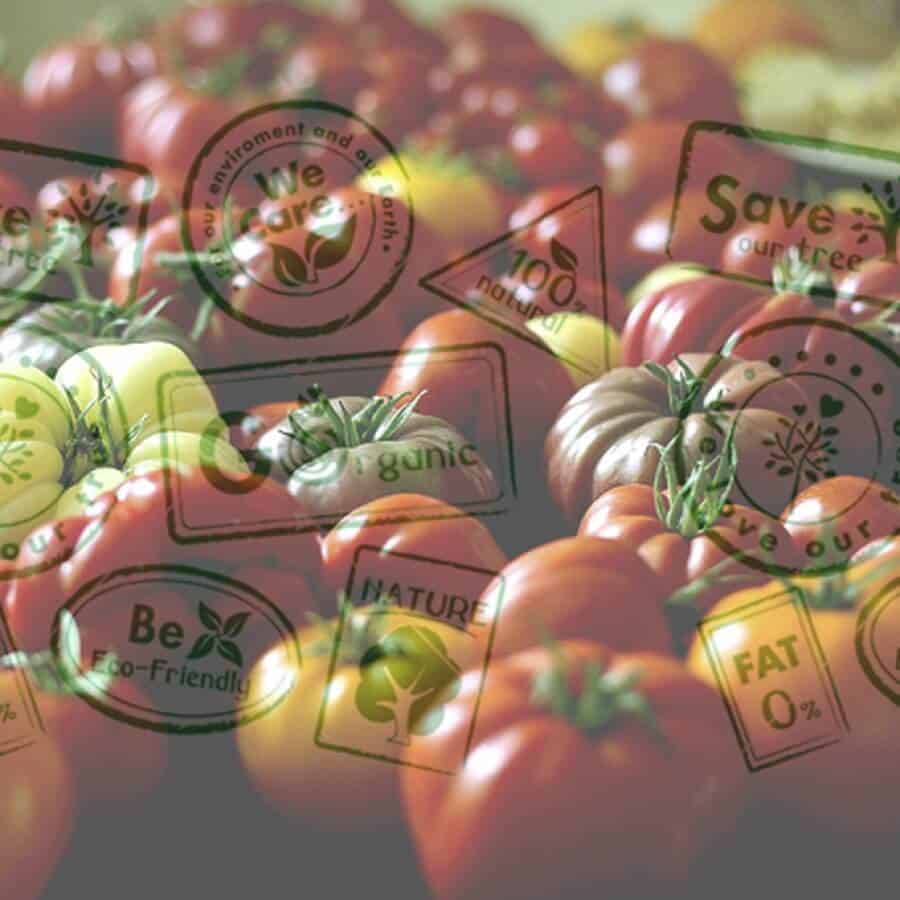While we keep seeing more ‘organic’ labels on food in the markets, the reality is way more toxic. Youth Time will tell you why, explain different food production processes across the world, and will give you tips on where to buy real organic food.

Organic food has gained popularity because it is grown without using GMOs, pesticides, synthetic fertilizers, ionizing radiation, or synthetic fertilizers. Organic meats, eggs and diary come from animals that are not treated with growth hormones or antibiotics. What started as a trend has quickly become the norm, and a wide variety of organic and bio foods have hit the shelves. Since these foods are considered higher-quality they also come at a higher price, which is why some companies label their food as organic without the right certification.
Different places in the world have different certification processes. In North America organic food is certified by the United States Department of Agriculture. They have three separate categories for organic food: 100% organic foods are labeled either as ‘100 percent organic’ or simply ‘organic’. Then there are processed products that have 95% organic ingredients, and finally there are processed products that contain under 70 percent organic ingredients (and no GMOs in the other 30%). All three categories have very specific regulations. Any product that has a PLU code that begins with a 9 or a 4 is not organic. The guidelines for organic certification in the European Union are very strict, but each country can establish its own system as long as EU regulations are followed. In Germany, for example, they have the “Bio-Siegel” label, which means that 95% of the agricultural ingredients are harvested in conformity with organic farming regulations.
In South East Asian countries the regulations are still not fully implemented or enforced, so there are no restrictions on ‘organic’ labeling. This causes problems when food products are exported to Western countries with strict regulations, because some of the food may be ‘fake’ organic. A lot of food is imported from China due to the extremely cheap costs; it’s the 3rd largest agricultural product exporter to the United States. Not only are regulations in China not enforced well enough, but according to China’s Ministry of Environmental Protection, around one-fifth of the farmland in the country is polluted.

Regardless of the country you are in, the best way to purchase quality organic food is to buy domestically produced products. These foods can be purchased at farmers’ markets, local farms, and smaller co-op stores rather than chains. There is also of course the option of growing some basic food yourself. Many fruits and vegetables can thrive even when grown indoors.
Since the concept of organic food has become main stream due to widespread fear of consuming health-harming GMOs, there have been a lot of developments in the field. There are currently organic options for health-care products and also clothing materials. The understanding of organic has evolved past food and now includes how environmentally friendly the process of production is. Over the past few years it has been discovered that some popular organic food trends that involve importing food, have left foreign farmlands stripped bare because of unsustainable overproduction to meet demand.
Today, there are still many myths and misunderstandings when it comes to organic food and the processes of farming, production, and certification. For this reason it is important to do in depth research if you want to incorporate organic food into your diet fully. The choice to eat organic doesn’t have to be taken to the extreme, either. Even upgrading just a couple of products in your diet to organic will make a difference to your health and the environment.

A great but potentially expensive way to shop for organic food is online. This allows you to research the food you are buying, see customer reviews, and discover exactly how the food is produced and what it contains. The following links show just a few organic stores in the United States and Europe that deliver groceries locally and worldwide. However it is always best to find a local store or e-shop that will show the origins of its products: buying locally results in fresher products and a less negative impact on the environment, and it’s great for the local economy.
United States Online Organic Stores: the Organic Grocer, Shop Organic, True Foods Market.
European Online Organic Stores: Raw Living, Real Foods, Planet Bio.
Support us!
All your donations will be used to pay the magazine’s journalists and to support the ongoing costs of maintaining the site.
Share this post
Interested in co-operating with us?
We are open to co-operation from writers and businesses alike. You can reach us on our email at [email protected]/[email protected] and we will get back to you as quick as we can.










